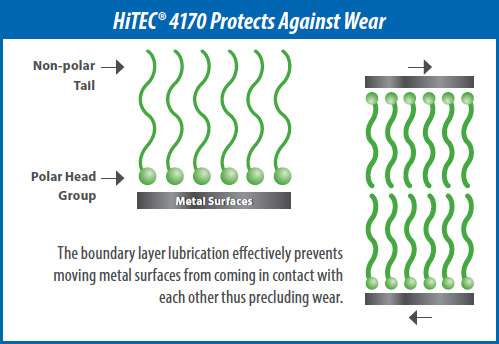- High lubricity performance at low treat-rates provides a cost effective solution
- Compatible with all commonly used diesel fuel additives
- Meets DGMK No Harm requirements
HiTEC® 4170

Key Performance Benefits
Application
HiTEC® 4170 Refinery and Distribution Additive is a highly effective solution for lubricity improvement in diesel fuels. Sulphur levels in diesel fuel are being reduced worldwide to improve vehicle emissions and enable advanced exhaust treatment systems. In reducing sulphur levels the inherent lubricity characteristics of a fuel are also significantly diminished.
The importance of the lubricating properties is becoming more important as advanced vehicle design use increasingly severe conditions to meet efficiency and emission targets. Vehicle manufacturers typically consider the lubricating properties of a diesel fuel with less than 350 ppm sulphur to be unacceptable. The importance of diesel lubricity characteristics are recognised by minimum performance criteria in fuel specifications. For example:
- EN590 specifies a maximum 460 microns wear scar diameter by HFRR
- ASTM D975 specifies a maximum 520 microns wear scar diameter by HFRR
HiTEC® 4170 restores lubricity characteristics in low sulphur diesel fuel. HiTEC® 4170 is based upon mono-acid technology which has been successfully used for millions of vehicle miles to provide lubricity improvement in low sulphur diesel fuels. Today it is estimated that two-thirds of lubricity additive use is mono-acid based and market share continues to grow.
Recommended Dosage
Treat rates may vary depending on base fuels. Afton Chemical recommends using HFRR test method CEC F-06-A-96 or similar to determine specific treat-rates for your application. Typical treat-rates are in the range of 50 to 150 ppmv.
Typical Characteristics

Handling Information
Shelf Life: 6 months when stored at 60˚C, 24 months when stored at 40˚C.


